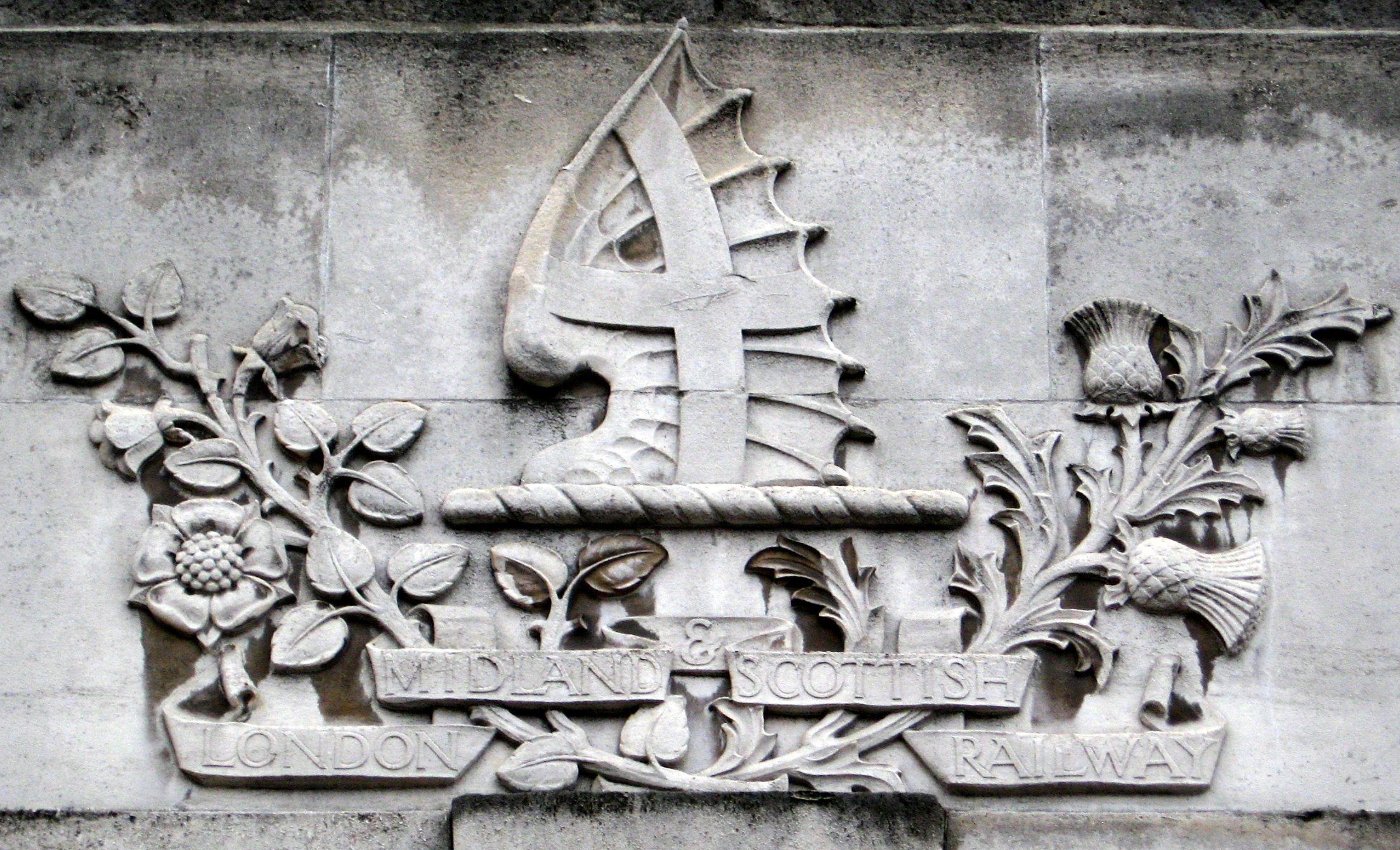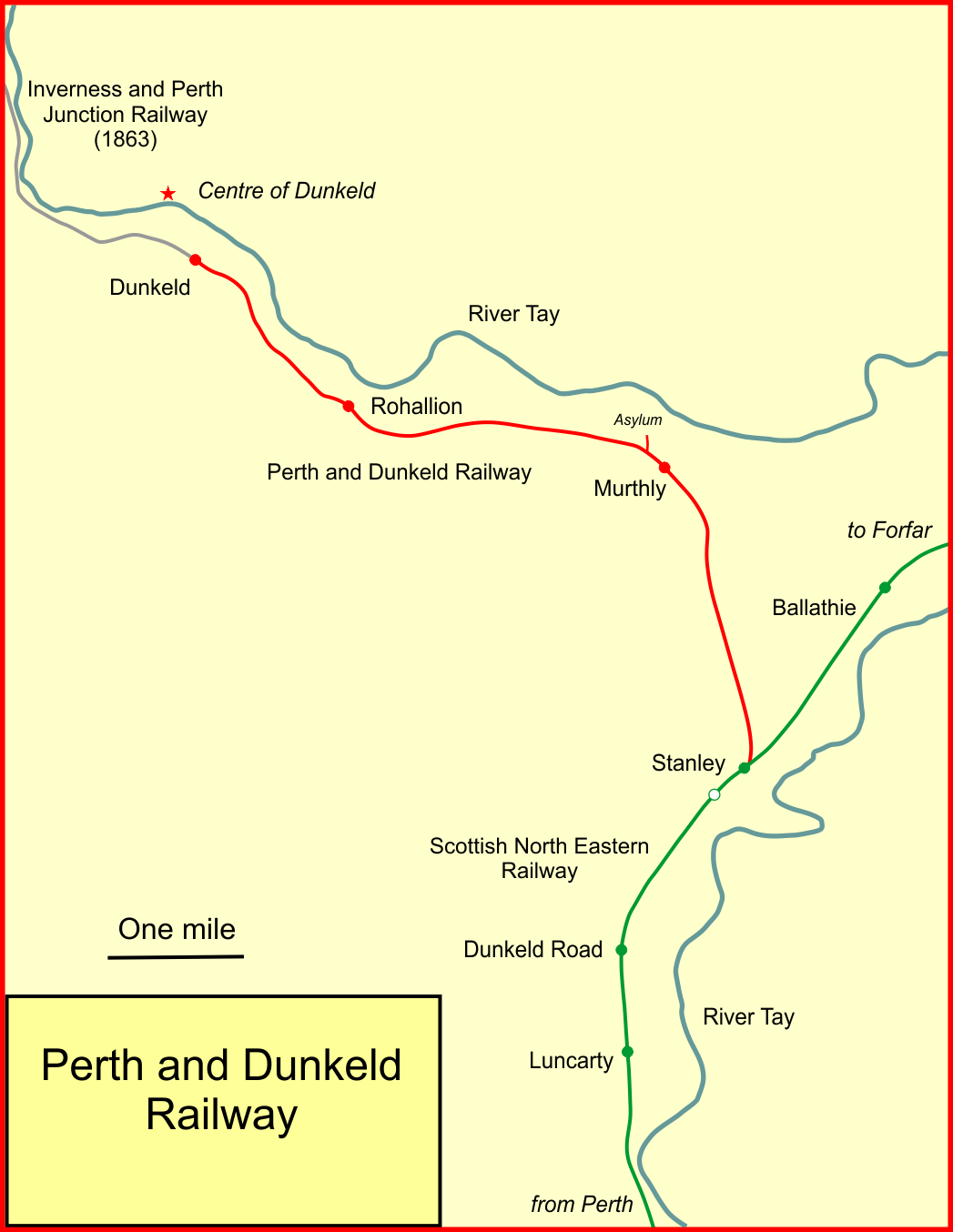|
Luncarty Railway Station
Luncarty railway station served the village of Luncarty, Perth and Kinross, Scotland, from 1848 to 1951 on the Scottish Midland Junction Railway. History The station opened on 2 August 1848 by the Scottish Midland Junction Railway The Scottish Midland Junction Railway was authorised in 1845 to build a line from Perth to Forfar. Other companies obtained authorisation in the same year, and together they formed a route from central Scotland to Aberdeen. The SMJR opened its .... It closed to both passengers and goods traffic on 18 June 1951. References External links Disused railway stations in Perth and Kinross Former Caledonian Railway stations Railway stations in Great Britain opened in 1848 Railway stations in Great Britain closed in 1951 1848 establishments in Scotland 1951 disestablishments in Scotland {{PerthKinross-railstation-stub ... [...More Info...] [...Related Items...] OR: [Wikipedia] [Google] [Baidu] |
Luncarty
Luncarty (; pronounced ''Lung''-cur-tay) ) is a village in Perth and Kinross, Scotland, approximately north of Perth. It lies between the A9 to the west, and the River Tay to the east. Etymology The name ''Luncarty'', recorded in 1250 as ''Lumphortyn'', may be of Gaelic origin. The name may involve the element ''longartaibh'', a plural form of ''longphort'' meaning variously "harbour, palace, encampment". History The historian Hector Boece (1465–1536), in his ''History of the Scottish People'', records that, in 990, Kenneth III of Scotland defeated the Danes near Luncarty. However, the Scottish historian John Hill Burton strongly suspected the battle of Luncarty to be an invention of Hector Boece. Burton was incorrect. Walter Bower, writing in his Scotichronicon around 1440, some 87 years before Boece first published his ''Scotorum Historia'', refers to the battle briefly as follows: :''"that remarkable battle of Luncarty, in which the Norsemen with their king were totally ... [...More Info...] [...Related Items...] OR: [Wikipedia] [Google] [Baidu] |
Perth And Kinross
Perth and Kinross ( sco, Pairth an Kinross; gd, Peairt agus Ceann Rois) is one of the 32 council areas of Scotland and a Lieutenancy Area. It borders onto the Aberdeenshire, Angus, Argyll and Bute, Clackmannanshire, Dundee, Fife, Highland and Stirling council areas. Perth is the administrative centre. With the exception of a large area of south-western Perthshire, the council area mostly corresponds to the historic counties of Perthshire and Kinross-shire. Perthshire and Kinross-shire shared a joint county council from 1929 until 1975. The area formed a single local government district in 1975 within the Tayside region under the ''Local Government (Scotland) Act 1973'', and was then reconstituted as a unitary authority (with a minor boundary adjustment) in 1996 by the '' Local Government etc. (Scotland) Act 1994''. Geographically the area is split by the Highland Boundary Fault into a more mountainous northern part and a flatter southern part. The northern area is a pop ... [...More Info...] [...Related Items...] OR: [Wikipedia] [Google] [Baidu] |
Ordnance Survey National Grid
The Ordnance Survey National Grid reference system (OSGB) (also known as British National Grid (BNG)) is a system of geographic grid references used in Great Britain, distinct from latitude and longitude. The Ordnance Survey (OS) devised the national grid reference system, and it is heavily used in their survey data, and in maps based on those surveys, whether published by the Ordnance Survey or by commercial map producers. Grid references are also commonly quoted in other publications and data sources, such as guide books and government planning documents. A number of different systems exist that can provide grid references for locations within the British Isles: this article describes the system created solely for Great Britain and its outlying islands (including the Isle of Man); the Irish grid reference system was a similar system created by the Ordnance Survey of Ireland and the Ordnance Survey of Northern Ireland for the island of Ireland. The Universal Transverse ... [...More Info...] [...Related Items...] OR: [Wikipedia] [Google] [Baidu] |
Scottish Midland Junction Railway
The Scottish Midland Junction Railway was authorised in 1845 to build a line from Perth to Forfar. Other companies obtained authorisation in the same year, and together they formed a route from central Scotland to Aberdeen. The SMJR opened its main line on 4 August 1848. Proposals to merge with other railways were rejected by Parliament at first, but in 1856 the SMJR merged with the Aberdeen Railway to form the Scottish North Eastern Railway. The SNER was itself absorbed into the larger Caledonian Railway in 1866. The original SMJR main line was now a small section of a main line from Carlisle and central Scotland to Aberdeen. The original route was well aligned for fast running, but it by-passed numerous towns and many branches were built to serve them. The rival North British Railway had its own route from the south to Aberdeen, and spectacular competition for the fastest journey from London to Aberdeen was generated in the final decades of the nineteenth century. In the 1960s ... [...More Info...] [...Related Items...] OR: [Wikipedia] [Google] [Baidu] |
Caledonian Railway
The Caledonian Railway (CR) was a major Scottish railway company. It was formed in the early 19th century with the objective of forming a link between English railways and Glasgow. It progressively extended its network and reached Edinburgh and Aberdeen, with a dense network of branch lines in the area surrounding Glasgow. It was absorbed into the London, Midland and Scottish Railway in 1923. Many of its principal routes are still used, and the original main line between Carlisle and Glasgow is in use as part of the West Coast Main Line railway (with a modified entry into Glasgow itself). Introduction In the mid-1830s, railways in England evolved from local concerns to longer routes that connected cities, and then became networks. In Scotland it was clear that this was the way forward, and there was a desire to connect the Central Belt to the incipient English network. There was controversy over the route that such a line might take, but the Caledonian Railway was formed on ... [...More Info...] [...Related Items...] OR: [Wikipedia] [Google] [Baidu] |
London, Midland And Scottish Railway
The London, Midland and Scottish Railway (LMSIt has been argued that the initials LMSR should be used to be consistent with LNER, GWR and SR. The London, Midland and Scottish Railway's corporate image used LMS, and this is what is generally used in historical circles. The LMS occasionally also used the initials LM&SR. For consistency, this article uses the initials LMS.) was a British railway company. It was formed on 1 January 1923 under the Railways Act of 1921, which required the grouping of over 120 separate railways into four. The companies merged into the LMS included the London and North Western Railway, Midland Railway, the Lancashire and Yorkshire Railway (which had previously merged with the London and North Western Railway on 1 January 1922), several Scottish railway companies (including the Caledonian Railway), and numerous other, smaller ventures. Besides being the world's largest transport organisation, the company was also the largest commercial enter ... [...More Info...] [...Related Items...] OR: [Wikipedia] [Google] [Baidu] |
Highland Railway
The Highland Railway (HR) was one of the smaller British railways before the Railways Act 1921, operating north of Perth railway station in Scotland and serving the farthest north of Britain. Based in Inverness, the company was formed by merger in 1865, absorbing over 249 miles (401 km) of line. It continued to expand, reaching Wick and Thurso in the north and Kyle of Lochalsh in the west, eventually serving the counties of Caithness, Sutherland, Ross & Cromarty, Inverness, Perth, Nairn, Moray and Banff. Southward it connected with the Caledonian Railway at Stanley Junction, north of Perth, and eastward with the Great North of Scotland Railway at Boat of Garten, Elgin, Keith and Portessie.Conolly 2004. During the First World War the British Navy's base at Scapa Flow, in the Orkney Islands, was serviced from Scrabster Harbour near Thurso. The Highland Railway provided transport, including a daily ''Jellicoe Express'' passenger special, which ran between London and Th ... [...More Info...] [...Related Items...] OR: [Wikipedia] [Google] [Baidu] |
Perth And Dunkeld Railway
The Perth and Dunkeld Railway was a Scottish railway company. It was built from a junction with the Scottish Midland Junction Railway at Stanley, north of Perth, to a terminus at Birnam, on the south bank of the River Tay opposite Dunkeld. It was promoted by local landed proprietors, and opened in 1856. As a minor branch line inconveniently serving a modest town, its financial performance was poor. However, when a railway line from Inverness to Perth was promoted, the Dunkeld line was taken as part of the new route, which opened in 1863; the Perth and Dunkeld Railway Company ceased to exist, and the line was now part of the Inverness and Perth Junction Railway. The original line of the P&DR continues in use today, an intrinsic part of the Highland Main Line. Independence at first Aberdeen was connected to the railway network of Central Scotland in 1850. Inverness too expected a southward connection, but the intervening terrain was unpromising, and two railway schemes proposed a ... [...More Info...] [...Related Items...] OR: [Wikipedia] [Google] [Baidu] |
Former Caledonian Railway Stations
A former is an object, such as a template, gauge or cutting die, which is used to form something such as a boat's hull. Typically, a former gives shape to a structure that may have complex curvature. A former may become an integral part of the finished structure, as in an aircraft fuselage, or it may be removable, being using in the construction process and then discarded or re-used. Aircraft formers Formers are used in the construction of aircraft fuselage, of which a typical fuselage has a series from the nose to the empennage, typically perpendicular to the longitudinal axis of the aircraft. The primary purpose of formers is to establish the shape of the fuselage and reduce the column length of stringers to prevent instability. Formers are typically attached to longerons, which support the skin of the aircraft. The "former-and-longeron" technique (also called stations and stringers) was adopted from boat construction, and was typical of light aircraft built until th ... [...More Info...] [...Related Items...] OR: [Wikipedia] [Google] [Baidu] |
Railway Stations In Great Britain Opened In 1848
Rail transport (also known as train transport) is a means of transport that transfers passengers and goods on wheeled vehicles running on rails, which are incorporated in Track (rail transport), tracks. In contrast to road transport, where the vehicles run on a prepared flat surface, rail vehicles (rolling stock) are directionally guided by the tracks on which they run. Tracks usually consist of steel rails, installed on Railroad tie, sleepers (ties) set in track ballast, ballast, on which the rolling stock, usually fitted with metal wheels, moves. Other variations are also possible, such as "slab track", in which the rails are fastened to a concrete foundation resting on a prepared subsurface. Rolling stock in a rail transport system generally encounters lower friction, frictional resistance than rubber-tyred road vehicles, so passenger and freight cars (carriages and wagons) can be coupled into longer trains. The rail transport operations, operation is carried out by a ... [...More Info...] [...Related Items...] OR: [Wikipedia] [Google] [Baidu] |






